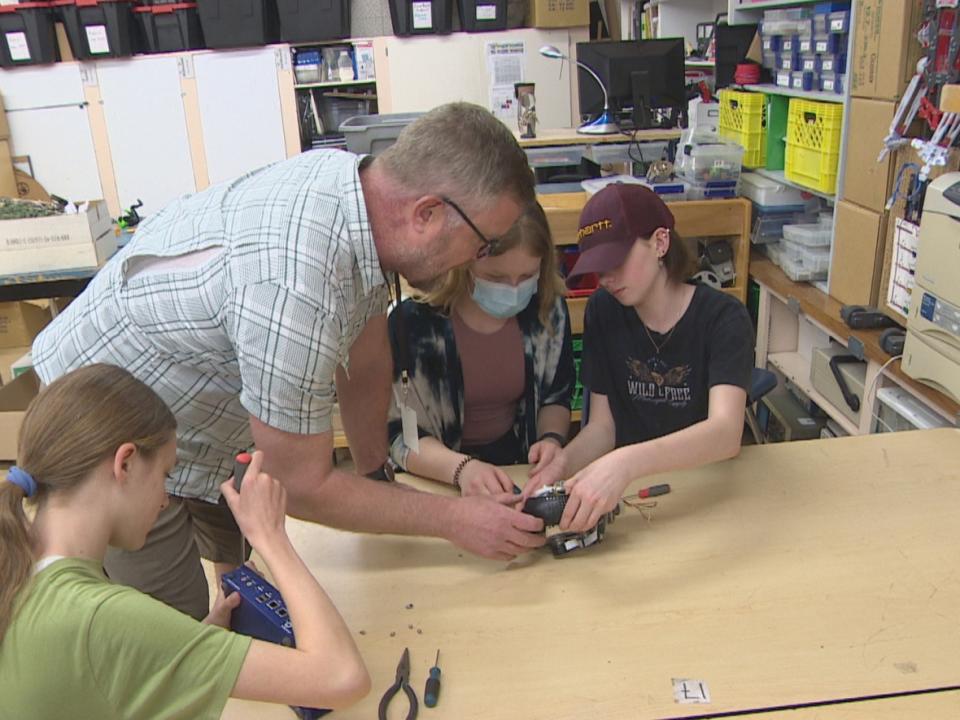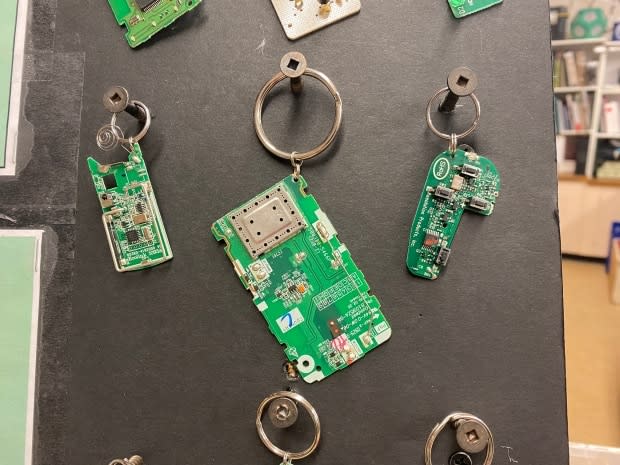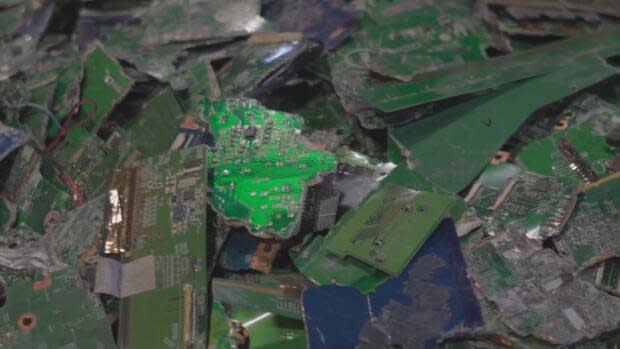Saskatoon classroom gets creative to reduce electronic waste

With screwdrivers and pliers in hand, Grade 6 and 7 students at Montgomery School in Saskatoon carefully dismantle laptops, race cars, cellphones and printers.
The electronics are either past their useful life or no longer work. But the students are making use of what's inside of them.
It's part of a class project to cut down on the amount of electronic waste — or e-waste — that ends up in the landfill.
"The idea is ... how do we look at old items that would have probably been considered worthless and find the value in them, and look at ways of bringing that value out," said teacher David Crowell.
Classes at the school began working with the non-profit Saskatchewan Environmental Society on a project two years ago. Students were asked to go through the school's trash bins and sort items to see what could be reused or composted.
The Grade 6/7 curriculum includes looking at the social impact of electricity and waste management, and with donated electronics gathering dust at the school, Crowell thought his class could learn how to reuse e-waste.
So far, the class has had success in creating keychains out of circuit boards. They were recently sold at a school event, with funds going toward future class projects.
Most of the e-waste is metal, which Crowell takes to a local recycler.

In 2019, a record 53.6 million million tonnes of e-waste was dumped worldwide, according to a report from the United Nations.
UN data also shows Canada generated 20.2 kilograms of e-waste per capita that year. But in 2016, Canada only formally collected 2.8 kilograms per capita.
"Every family generates a lot of electronic waste and we don't really realize it," Crowell said.
His school's project teaches students an important lesson, but it's not all serious business.
"I think the most fun part about doing this is probably ripping apart everything," said Grade 6 student Bailey George.
Worth its weight in gold
It's not just Crowell's students who understand the value of e-waste.
In 2015, University of Saskatchewan chemistry professor Stephen Foley and his grad students began looking at more effective ways to recover gold, instead of mining it. The team decided to recycle the element from electronic waste.
A UN report notes that annually, approximately $21 billion worth of gold and silver goes into the manufacturing of electronics like phones and tablets worldwide.

The group's work resulted in the creation of a solvent to extract gold from electronics. The team was so successful that they created a company out of the project and received additional investment after a successful pitch on the CBC show Dragons' Den in 2018.
"If you can monetize the waste stream, then you really have a chance to recycle it I think," said Foley. "If it's costing more to recycle it than it is to mine new gold, then [recycling is] probably not going to happen as a viable form."
No small effort to reuse e-waste
Gayleen Creelman, the program director for the Electronic Products Recycling Association in Saskatchewan, says since the program began in the province in 2007, people in the province have recycled approximately 37,000 tonnes of e-waste.
Creelman says per capita, that's roughly on track with the rest of country, but she noted recycling regulations vary province to province.

One tonne of copper can be produced from just 14 tonnes of e-waste, compared to 80,000 tonnes of raw material mined from the ground, according to Creelman.
The electronics recycling association, which operates regulated electronic recycling programs across the country, takes e-waste from recycling collection centres, such as SARCAN in Saskatchewan, and sends it to processing facilities.
"We take the copper and the palladium and the steel and the aluminum, the plastics and glass and that does get reused, so it's very circular in that respect," said Creelman.
"But encouraging the reuse of [a] device in its current form is what we really promote as well."
According to the association's website, there are 30 e-waste collection locations in the province, which include retailers like Staples and Best Buy.

 Yahoo Sports
Yahoo Sports